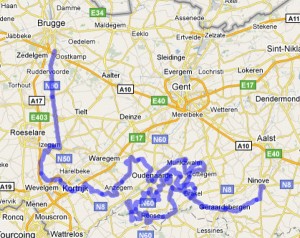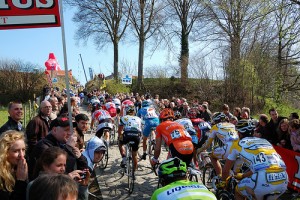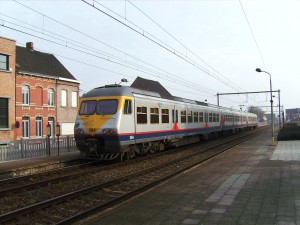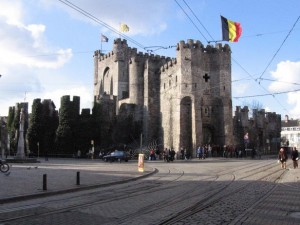New Spring/Summer Folding Bike Blog Series
This is the first of a series of posts where we feature a prominent bike race and the city/region where it is held. Each of these posts will consist of 2 main parts: a brief introduction to the race, its history, and any interesting developments, and an overview of the area, in particular, where and how to travel with your folding bike. Part cycling news, part travel blog, we hope it provides a little something for everyone!
The Race: Tour of Flanders
This Sunday, April 3rd will see the 95th riding of the Tour of Flanders (or De Ronde van Vlaanderen as it is called in Belgium). The Tour of Flanders is one of the five monuments of the professional race calendar; we’ll cover at least 3 more of the 5 in this blog series.
While most races with “Tour” in the name are multi-day stage races (think Tour de France, which takes place over the entire month of July), the Tour of Flanders is a one-day, 161-mile race beginning in Oostkamp, just 5 miles south of the Bruges city-center, and finishing in Ninove, 15 miles west of Brussels. While “Tour” is something of a misnomer, the race may owe its name to the first Tour of Flanders, held in 1913, which was a 206-mile race that went through every major town in Flanders as a celebration and promotion of Flemish nationalism – a veritable tour of the Flemish region. While the route has changed substantially over the years, you can see from the map how the race course winds and twists through the Belgian countryside; indeed, a straight route from start to finish is only 46 miles!
The Tour of Flanders is known for its rough cobbled roads and a famously steep and numerous climbs (17 in total) called “bergs”. After the Second World War, many of the major roadways where the race had taken place in previous years were paved over. In order to preserve the character of the race (and to prevent the race ending in a mass sprint) organizers moved the race route to include as many cobbled sections as possible. The winner of the Tour of Flanders need not only be a strong rider, but also lucky – on the narrow cobbled route, a fall by a single rider can take out or stall many riders behind him.
Travelling with your Folding Bike in Flanders
Flanders is the Northern region of Belgium. The major cities include Antwerp, Bruges, Ghent and Ypres. The region also surrounds the city of Brussels, although Brussels is not technically part of Flanders. The primary language spoken in Flanders is Dutch.
Flanders is a wonderful place to travel with your folding bike. There is an extensive network of bike paths both within and between cities, in addition to bike-friendly hotels and hostels. It’s easy to get around by bike in many cities too – Bruges, for example, boasts of 50 streets that allow bikes to travel both directions, while cars may only travel in one.
If you’re thinking of a Montague for travel in Flanders, the Navigator or the Fit would be both an excellent choice – most of the city streets and bike paths in the area are paved and well-maintained, making them suitable for road and hybrid bikes. And while there are maps that give directions for flat routes, you might be glad of the 27-speeds if you’re going to take on some of those hills. On the other hand, if you’re thinking of riding some of the Tour of Flanders course, you might be more comfortable on a Paratrooper in some of those rougher sections! If you’re going to do extensive riding out in the country, you also probably want to take along your own repair kit and brush up on maintenance basics.
Many of Flanders’ bike paths can take you on a scenic route from one town to another along waterways or through the countryside, but if you’d rather take the train between cities, it’s easy to take your bike along. The Belgian train system, B-Rail, which links cities and towns all over the country, allows passengers 3 items of luggage at no charge…and a folding bike counts as a piece of luggage! Folding bikes may be brought on board any train and stowed in the luggage compartment above or below the seat. If you have a non-folding bike, you are still permitted to take your bike on board, however there is a small additional charge and a limited amount of designated bike space on each train.
Taking in the Sites
If you’re not going to be at the Tour of Flanders in person this Sunday, you can always visit the museum dedicated to the Tour, located in city of Oudenaarde which the race passes through. Flanders is also home to a number of art museums (in Antwerp there is both an art museum and a diamond museum), war memorials (especially in Ypres and Western Flanders), and castles open to the public (such as Gravensteen Castle in Ghent). Word has it, the easiest and cheapest way to visit many of the war memorials and castles is by bike.
Where Have You Travelled?
Have you ever been to Flanders? Did you have a bike with you? Did you rent or take your own? Do you plan on watching the race this Sunday? Have you ever ridden on the famous Belgian cobbles? We’d love to hear your stories!






